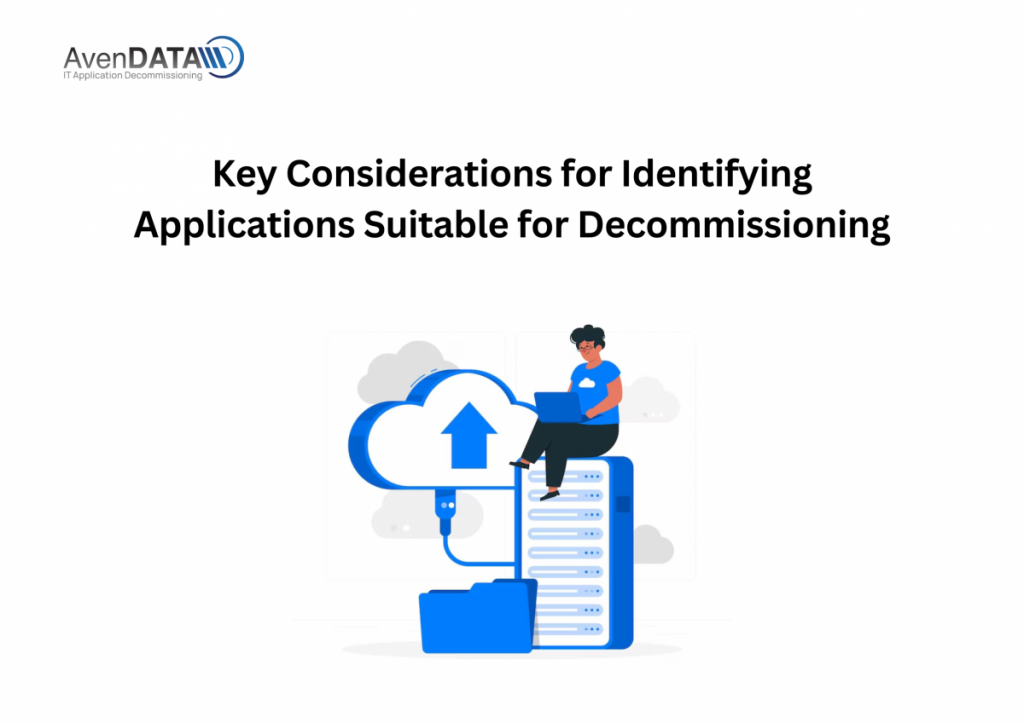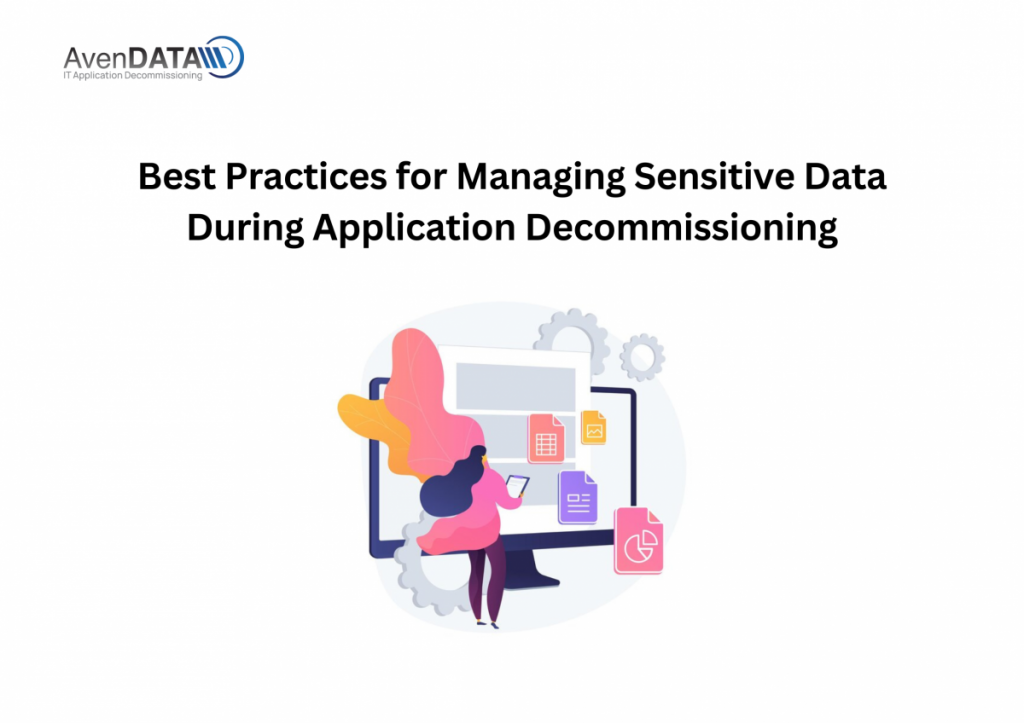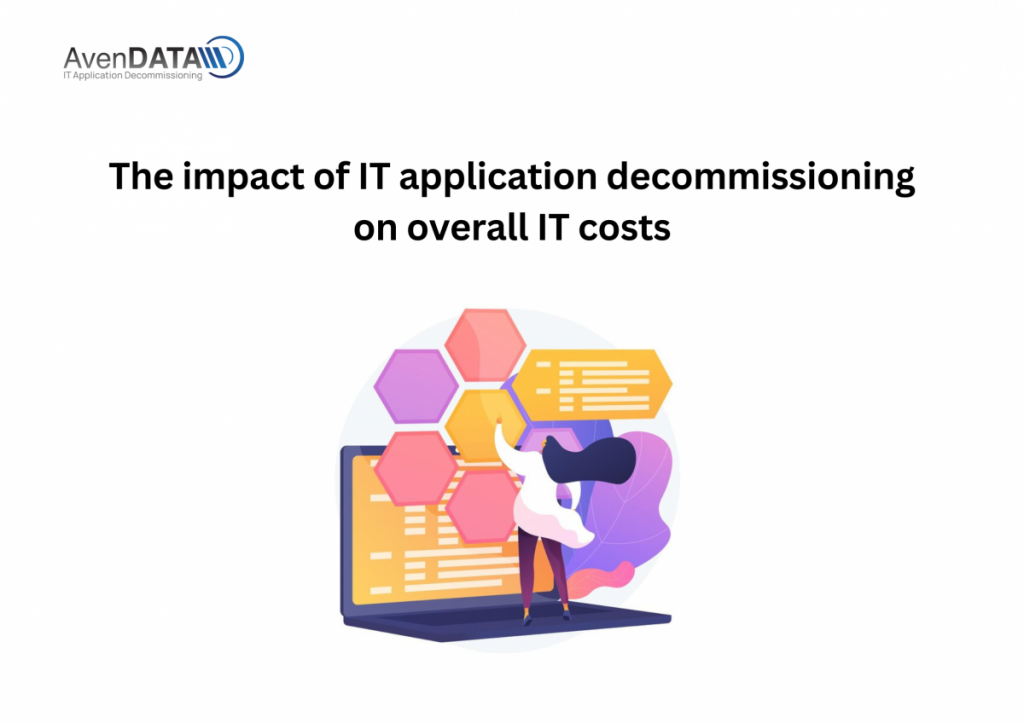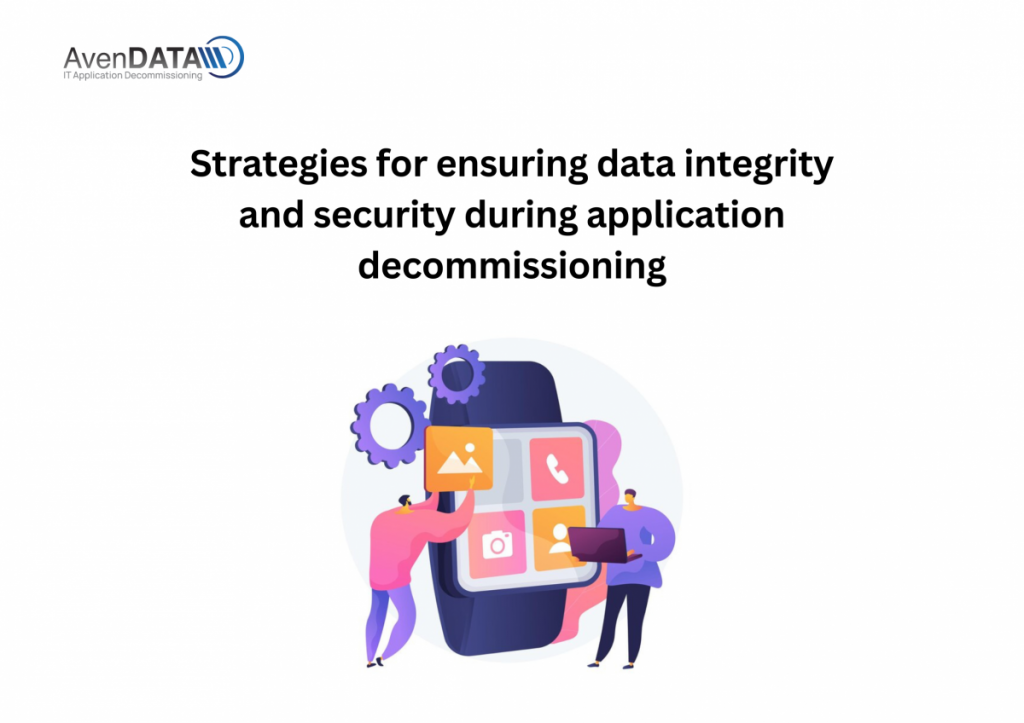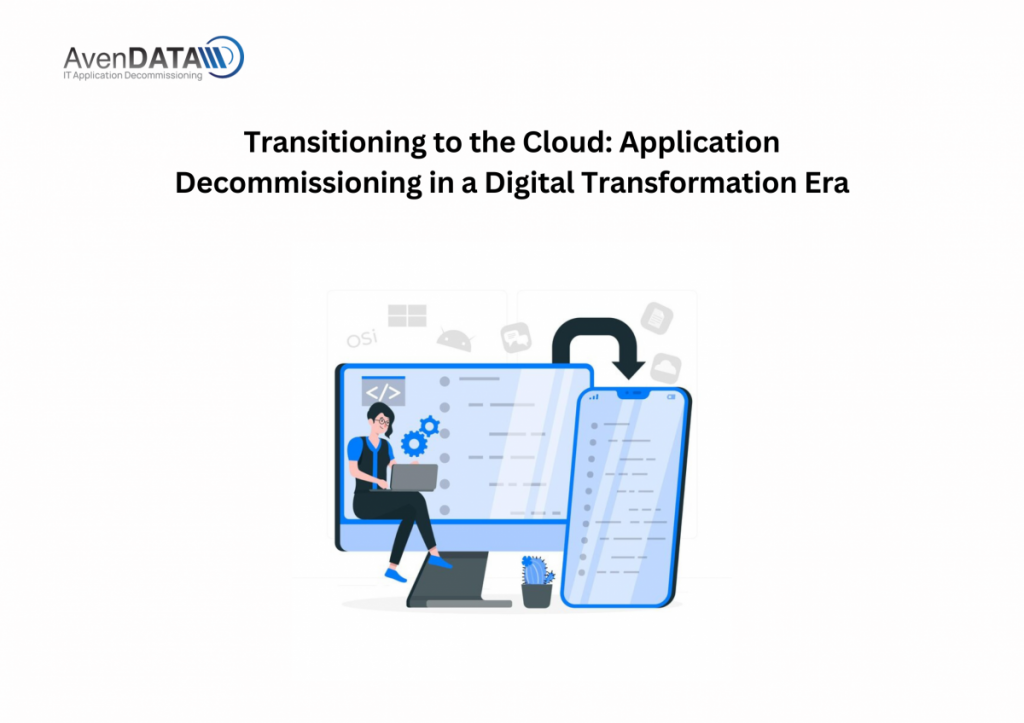Key Considerations for Identifying Applications Suitable for Decommissioning
Introduction: In today’s rapidly evolving technological landscape, organizations must regularly assess their application... View MoreKey Considerations for Identifying Applications Suitable for Decommissioning
Introduction: In today’s rapidly evolving technological landscape, organizations must regularly assess their application portfolios to identify outdated or redundant applications that are no longer serving their intended purpose. IT Application decommissioning offers a strategic approach to streamline IT operations, reduce costs, and improve overall efficiency. However, identifying which applications are suitable for decommissioning requires careful consideration. In this blog, we will explore key considerations for identifying applications suitable for decommissioning, helping organizations make informed decisions and maximize the benefits of the decommissioning process.
Business Value and Relevance: Assess the business value and relevance of each application within the organization. Evaluate whether the application aligns with current business objectives, processes, and strategic initiatives. Applications that no longer contribute to business goals or have become redundant due to technological advancements are strong candidates for decommissioning.
User Adoption and Engagement: Consider the level of user adoption and engagement with the application. If an application is underutilized or has a low user base, it may indicate that it no longer meets user needs or has been replaced by more efficient alternatives. Engage with users to gather feedback on their satisfaction, pain points, and suggestions for improvement to inform the decommissioning decision.
Technical Compatibility and Integration: Evaluate the technical compatibility and integration of the application with existing systems and infrastructure. Applications that are difficult to integrate, require excessive maintenance or customization, or pose compatibility challenges may hinder operational efficiency. Decommissioning such applications can streamline IT operations and reduce maintenance costs.
Data Management and Dependencies: Assess the data management aspects of the application. Consider the volume, quality, and sensitivity of the data associated with the application. Applications with outdated or redundant data that can be migrated or retired without impacting critical business processes are suitable candidates for decommissioning. Identify any dependencies on the application for other systems or processes to ensure a smooth transition.
Regulatory and Compliance Requirements: Consider the application’s compliance with industry regulations and data protection requirements. Applications that do not meet regulatory standards or pose risks to data privacy may need to be decommissioned to mitigate legal and compliance risks. Ensure proper data archiving and disposal processes are in place to meet regulatory obligations.
Total Cost of Ownership (TCO): Evaluate the total cost of ownership (TCO) of the application, considering licensing fees, maintenance costs, support contracts, infrastructure requirements, and associated resources. Applications with high TCO and low return on investment are good candidates for decommissioning, as retiring them can lead to significant cost savings and resource optimization.
Risk and Security: Assess the risk and security implications associated with the application. Applications that are vulnerable to security breaches, lack adequate support, or have a history of security incidents may pose significant risks to the organization. Decommissioning such applications mitigates security vulnerabilities and reduces potential risks.
Future Scalability and Innovation: Consider the application’s scalability and ability to support future growth and innovation. Applications that lack scalability or cannot adapt to evolving business needs hinder organizational agility. By decommissioning such applications, organizations can free up resources and invest in more innovative and scalable solutions.
Stakeholder Engagement and Communication: Involve key stakeholders, including business users, IT teams, and executive management, in the decision-making process. Gather insights, address concerns, and communicate the rationale behind the decommissioning decision. Stakeholder buy-in and collaboration are crucial for successful application decommissioning.
Conclusion: Identifying applications suitable for decommissioning requires a comprehensive evaluation of factors such as business value, user adoption, technical compatibility, data management, compliance, TCO, risk and security, future scalability, and stakeholder engagement. By carefully considering these key factors, organizations can make informed decisions, streamline their application portfolios, reduce costs, improve operational efficiency, and pave the way for innovation. Application decommissioning, when done strategically, enables organizations to optimize their IT landscapes and focus resources on systems that drive business growth and success.
Know more : https://avendata.com/application-decommissioning
#AvenDATA #ITdecommissioning #datadecomissioning #applicationdecommissioning #dataarchiving #applicationretirement
Best Practices for Managing Sensitive Data During Application Decommissioning
Introduction: During the process of application decommissioning, effectively managing sensitive data is crucial to mainta... View MoreBest Practices for Managing Sensitive Data During Application Decommissioning
Introduction: During the process of application decommissioning, effectively managing sensitive data is crucial to maintain data privacy, security, and compliance. Mishandling or unauthorized access to sensitive data can lead to severe consequences, including legal and reputational risks. In this blog, we will explore best practices for managing sensitive data during application decommissioning, providing organizations with guidelines to ensure data protection and minimize potential risks.
Identify and Classify Sensitive Data: Before decommissioning an application, it is essential to identify and classify sensitive data within the application. This includes personally identifiable information (PII), financial records, intellectual property, or any other data subject to privacy regulations. By understanding the types of sensitive data involved, organizations can develop appropriate strategies for protecting and managing this information.
Implement Data Masking and Anonymization: To maintain data privacy during IT application decommissioning, consider implementing data masking or anonymization techniques. Data masking replaces sensitive data with fictional or scrambled values, while anonymization removes or alters identifying information. These techniques allow organizations to retain meaningful data for testing or historical purposes while mitigating privacy risks.
Conduct Data Inventory and Mapping: Perform a comprehensive data inventory and mapping exercise to identify where sensitive data resides within the application. This includes databases, file systems, backups, and any other storage locations. By understanding the data’s location and flow, organizations can better assess the potential risks and plan appropriate security measures during decommissioning.
Develop a Data Retention and Disposal Plan: Create a clear data retention and disposal plan that outlines how sensitive data will be managed during the decommissioning process. This plan should include timelines for data retention, legal requirements, and secure disposal methods. Ensure that data retention and disposal practices are aligned with relevant regulatory frameworks, industry standards, and internal policies.
Secure Data Transfer and Storage: When migrating or transferring sensitive data during application decommissioning, prioritize secure methods such as encrypted connections or secure file transfer protocols. Ensure that data is encrypted during transit and stored in secure locations, protected by access controls, firewalls, and intrusion detection systems. Limit access to authorized personnel only.
Conduct Thorough Data Cleansing: Before decommissioning an application, conduct thorough data cleansing to remove any unnecessary or redundant sensitive data. This process helps minimize data volumes, reduce risks, and ensure compliance with data protection regulations. Implement data quality checks and validation processes to ensure data accuracy and integrity.
Maintain Audit Trails and Logs: Implement robust logging and auditing mechanisms to monitor and record activities related to sensitive data during application decommissioning. This includes tracking data access, modifications, transfers, and disposal. Audit trails and logs serve as important evidence for compliance purposes, incident investigations, and accountability.
Regularly Test and Validate Security Measures: Regularly test and validate the effectiveness of security measures implemented to protect sensitive data during application decommissioning. This includes conducting vulnerability assessments, penetration testing, and security audits to identify potential weaknesses. Mitigate any identified risks promptly to ensure data integrity and minimize security vulnerabilities.
Involve Data Protection Officers (DPOs) and Legal Experts: Engage data protection officers (DPOs) and legal experts to provide guidance on data privacy regulations, compliance requirements, and best practices. Their expertise can help ensure that sensitive data is managed in accordance with legal obligations, industry standards, and privacy frameworks.
Provide Employee Training and Awareness: Educate employees about the importance of managing sensitive data during application decommissioning. Offer training programs to raise awareness of data privacy risks, security protocols, and best practices. Encourage employees to report potential data breaches or vulnerabilities promptly.
Conclusion: Managing sensitive data during application decommissioning is critical for organizations to protect data privacy, ensure compliance, and mitigate risks. By following best practices such as identifying and classifying sensitive data, implementing data masking and anonymization, conducting data inventory and mapping, developing a data retention and disposal plan, securing data transfer and storage, conducting thorough data cleansing, maintaining audit trails and logs, testing security measures, involving DPOs and legal experts, and providing employee training, organizations can effectively manage sensitive data throughout the decommissioning process. By prioritizing data privacy and security, organizations can safeguard sensitive information, maintain compliance with regulatory requirements, and protect their reputation in an increasingly data-driven world.
Know more : https://avendata.com/application-decommissioning
#AvenDATA #ITdecommissioning #datadecomissioning #applicationdecommissioning #dataarchiving #applicationretirement
The impact of IT application decommissioning on overall IT costs
Introduction: As organizations strive to optimize their IT infrastructure, one crucial aspect often overlooked is the cost associated ... View MoreThe impact of IT application decommissioning on overall IT costs
Introduction: As organizations strive to optimize their IT infrastructure, one crucial aspect often overlooked is the cost associated with maintaining outdated or redundant applications. IT application decommissioning, the process of retiring such applications, can have a significant impact on overall IT costs. By eliminating unnecessary expenses and streamlining operations, organizations can achieve substantial cost savings while improving efficiency. In this blog, we will explore the impact of IT application decommissioning on overall IT costs, highlighting the benefits, challenges, and strategies for successful implementation.
Reducing Licensing and Maintenance Costs: One of the most immediate cost benefits of IT application decommissioning is the elimination of licensing and maintenance fees associated with outdated applications. By retiring these applications, organizations can avoid ongoing costs related to software licenses, support contracts, and maintenance fees. This reduction in expenditure can free up resources that can be redirected towards more strategic initiatives or invested in new technologies.
Minimizing Infrastructure and Hardware Expenses: Outdated applications often require dedicated hardware and infrastructure to operate effectively. These legacy systems can be costly to maintain, upgrade, and secure. Through decommissioning, organizations can retire the hardware and infrastructure associated with these applications, leading to reduced costs in maintenance, power consumption, cooling, and physical space requirements. By optimizing their IT infrastructure, organizations can achieve significant cost savings in the long run.
Streamlining IT Operations: Maintaining and supporting multiple applications can lead to complexity and inefficiency within IT operations. Decommissioning applications allows organizations to streamline their IT landscape, reducing the complexity of managing various systems. This simplification can lead to cost savings by optimizing resource allocation, reducing the need for specialized skills, and improving overall operational efficiency.
Enhancing Data Storage Optimization: Outdated applications often occupy valuable storage space, leading to increased costs associated with data storage and backup. Decommissioning these applications enables organizations to reclaim storage resources, leading to reduced costs in data storage infrastructure, backup systems, and data management. By optimizing data storage, organizations can achieve cost savings while improving overall data governance and accessibility.
Mitigating Security Risks and Compliance Costs: Outdated applications pose security risks, as they may no longer receive regular security updates and patches. Decommissioning these applications reduces the risk of data breaches and associated costs of remediation. Additionally, retiring applications that no longer comply with regulatory requirements can reduce compliance costs, such as audit expenses and potential penalties. By decommissioning outdated applications, organizations can proactively mitigate security risks and achieve compliance while reducing associated costs.
Challenges and Strategies for Successful Decommissioning: IT application decommissioning is not without its challenges. It requires careful planning, stakeholder management, and data migration to ensure a seamless transition. Organizations should develop a comprehensive decommissioning strategy that includes identifying applications suitable for retirement, assessing the impact on business processes, and managing data migration and archival. By leveraging project management methodologies, engaging key stakeholders, and conducting thorough impact assessments, organizations can mitigate risks and ensure successful decommissioning while optimizing IT costs.
Conclusion: IT application decommissioning has a direct and significant impact on overall IT costs. By retiring outdated or redundant applications, organizations can reduce licensing and maintenance costs, minimize infrastructure expenses, streamline IT operations, optimize data storage, and mitigate security risks and compliance costs. The key to successful decommissioning lies in careful planning, stakeholder engagement, and strategic execution. As organizations optimize their IT landscape through decommissioning, they can achieve substantial cost savings, improve operational efficiency, and free up resources to invest in more strategic initiatives. By embracing IT application decommissioning as part of their IT optimization strategy, organizations can drive long-term cost savings and position themselves for future growth and innovation.
Know more : https://avendata.com/application-decommissioning
#AvenDATA #ITdecommissioning #datadecomissioning #applicationdecommissioning #dataarchiving #applicationretirement
Strategies for ensuring data integrity and security during application decommissioning
Introduction: Application decommissioning is a critical process that involves retiring outdated or redundant app... View MoreStrategies for ensuring data integrity and security during application decommissioning
Introduction: Application decommissioning is a critical process that involves retiring outdated or redundant applications while ensuring the integrity and security of the data they contain. Safeguarding sensitive information is essential to protect against data breaches, maintain compliance, and uphold customer trust. In this blog, we will explore strategies for ensuring data integrity and security during application decommissioning, highlighting best practices and considerations to minimize risks and maintain data confidentiality.
Conduct a Comprehensive Data Inventory: Before decommissioning an application, conduct a thorough data inventory to identify and categorize the data it contains. Categorize data based on sensitivity, regulatory requirements, and business value. This inventory will help prioritize data protection efforts and ensure that all critical information is properly secured or disposed of.
Develop a Data Retention Policy: Establish a clear data retention policy that outlines the appropriate retention periods for different types of data. This policy should align with legal, regulatory, and compliance requirements. By defining the retention periods, organizations can ensure that data is retained for the necessary duration and securely disposed of when no longer needed.
Implement Data Encryption: Encrypting sensitive data is a crucial step in maintaining data integrity and security during IT application decommissioning. Apply encryption techniques to data at rest and in transit. This ensures that even if unauthorized access occurs, the data remains unreadable and unusable. Utilize strong encryption algorithms and secure key management practices to enhance data protection.
Secure Data Destruction: When decommissioning an application, ensure that data is securely destroyed to prevent unauthorized access. Implement secure data destruction methods such as physical destruction, data wiping, or secure data erasure tools. Verify the effectiveness of the destruction process through
independent audits or certifications.
Implement Access Controls: Restrict access to the decommissioned application and its associated data to authorized personnel only. Implement strong access controls, including role-based access controls (RBAC), two-factor authentication (2FA), and privileged access management (PAM). Regularly review and update access privileges to ensure that only authorized individuals can access the data.
Back Up Data: Before decommissioning an application, ensure that data is properly backed up and archived. This ensures that data can be recovered if needed, preserving its integrity and availability. Implement a robust backup strategy that includes regular backups, off-site storage, and periodic testing of data restoration processes.
Document and Maintain Audit Trails: Maintain detailed documentation and audit trails of all activities related to application decommissioning. This includes data transfers, data destruction, access controls, and any changes made to the data or systems. These audit trails can help track and monitor activities, detect unauthorized access, and provide evidence of compliance with data protection regulations.
Involve Data Protection Officers and Legal Experts: Engage data protection officers (DPOs) and legal experts to ensure compliance with relevant data protection laws and regulations. They can provide guidance on data privacy requirements, advise on best practices, and ensure that the decommissioning process adheres to legal obligations.
Educate and Train Employees: Raise awareness among employees about the importance of data integrity and security during application decommissioning. Provide training on data handling best practices, data protection policies, and security protocols. Encourage employees to report any potential security vulnerabilities or concerns.
Regularly Assess and Update Security Measures: Data integrity and security are ongoing responsibilities. Regularly assess and update security measures to address emerging threats and vulnerabilities. Conduct periodic security assessments, penetration testing, and vulnerability scans to identify and address any weaknesses that may arise during the decommissioning process.
Conclusion: Ensuring data integrity and security during application decommissioning is of paramount importance for organizations. By implementing comprehensive strategies such as conducting data inventories, developing data retention policies, encrypting data, securing data destruction, implementing access controls, backing up data, maintaining audit trails, involving data protection officers and legal experts, educating employees, and regularly updating security measures, organizations can minimize the risk of data breaches and protect sensitive information throughout the decommissioning process. By prioritizing data integrity and security, organizations can maintain compliance, protect customer trust, and safeguard their reputation in an increasingly data-driven world.
Know more : https://avendata.com/application-decommissioning
#AvenDATA #ITdecommissioning #datadecomissioning #applicationdecommissioning #dataarchiving #applicationretirement
Ensuring Data Security during IT Application Decommissioning
Introduction:
... View MoreEnsuring Data Security during IT Application Decommissioning
Introduction:
IT application decommissioning is a critical process that involves retiring outdated or redundant applications to streamline operations and optimize resources. While decommissioning applications offers numerous benefits, it is essential to prioritize data security throughout the process. In this blog, we will explore the importance of data security during IT application decommissioning and discuss best practices to ensure the protection and integrity of sensitive information.
Data Inventory and Classification:
Before decommissioning an application, it is crucial to conduct a comprehensive data inventory and classification process. Identify all the data stored within the application, categorize it based on sensitivity and regulatory requirements, and determine the appropriate security measures for each data type. This step lays the foundation for implementing robust security controls during the decommissioning process.
Data Backup and Retention:
Prior to decommissioning an application, organizations must ensure that all critical data is securely backed up and retained according to regulatory requirements and business needs. Regular backups should be performed to prevent data loss during the decommissioning process. It is important to verify the integrity of backups and test the restore process to ensure data can be recovered if needed.
Secure Data Transfer or Disposal:
When decommissioning an application, the data it contains must be handled securely. If the data needs to be transferred to a new system or archived, it should be done using encrypted channels and secure protocols to protect it from unauthorized access. Alternatively, if data is no longer required or cannot be transferred, it should be securely disposed of following industry best practices to prevent any potential data breaches.
Access Control and Permissions:
During the decommissioning process, it is crucial to review and manage access control and permissions to ensure that only authorized personnel can access and modify data. Revoking unnecessary access rights and permissions minimizes the risk of data breaches or unauthorized changes during the decommissioning process. Implementing strong authentication mechanisms, such as multi-factor authentication, further enhances data security.
Monitoring and Auditing:
Continuous monitoring and auditing play a vital role in ensuring data security during IT application decommissioning. By monitoring user activities, organizations can identify any suspicious behavior or unauthorized access attempts. Implementing robust logging mechanisms and regularly reviewing audit logs help detect and prevent potential security incidents, ensuring data security during the decommissioning process.
Compliance with Regulations:
Throughout the decommissioning process, organizations must adhere to relevant regulations and compliance requirements. This includes ensuring compliance with data protection laws, industry standards, and any contractual obligations regarding data security and privacy. By strictly following regulatory guidelines, organizations can mitigate legal risks and maintain the trust of their customers and stakeholders.
Secure Data Destruction:
In cases where data cannot be transferred or retained, secure data destruction is critical to prevent any potential data leakage. Organizations should employ proper data destruction methods, such as physical destruction or secure erasure techniques, to ensure that data is irretrievable. Verification of data destruction should be documented and retained for future reference or compliance purposes.
Conclusion:
Data security is of utmost importance during IT application decommissioning to protect sensitive information from unauthorized access, breaches, or loss. By implementing best practices such as data inventory and classification, secure data transfer or disposal, access control, monitoring and auditing, compliance with regulations, and secure data destruction, organizations can ensure the integrity and confidentiality of data throughout the decommissioning process. Prioritizing data security not only safeguards sensitive information but also helps organizations maintain customer trust, comply with regulations, and mitigate legal risks.
Know more : https://avendata.com/application-decommissioning
#AvenDATA #ITdecommissioning #datadecomissioning #applicationdecommissioning #dataarchiving #applicationretirement
Transitioning to the Cloud: Application Decommissioning in a Digital Transformation Era
The rise of cloud computing has transformed the way businesses operate, bringing about a new era of digital tra... View MoreTransitioning to the Cloud: Application Decommissioning in a Digital Transformation Era
The rise of cloud computing has transformed the way businesses operate, bringing about a new era of digital transformation. With the cloud, organizations have access to a vast array of powerful tools and technologies that can help them become more agile, efficient, and cost-effective. However, with any significant change comes the need for adaptation and evolution. In the case of transitioning to the cloud, this means decommissioning legacy applications.
For many businesses, this can be a daunting task. After all, these legacy applications have been a fundamental part of their operations for years, if not decades. But in order to fully reap the benefits of the cloud, it’s essential to let go of these old systems and embrace the new.
So, what exactly is IT application decommissioning, and why is it necessary in the digital transformation era?
IT Application decommissioning is the process of retiring or migrating legacy applications and data to the cloud. This involves identifying and retiring applications that are no longer needed, consolidating redundant systems, and transferring data to new, more efficient platforms. The goal of application decommissioning is to streamline and modernize an organization’s IT infrastructure, making it more agile, scalable, and cost-effective.
In the digital transformation era, where businesses are constantly adapting to new technologies and customer demands, application decommissioning is crucial. Here’s why:
Cost Savings:
Legacy applications are not only outdated and slow, but they also come with significant maintenance costs. By decommissioning these applications and moving to the cloud, organizations can save a significant amount of money on hardware, software, and maintenance expenses. Cloud computing offers a pay-as-you-go model, allowing businesses to only pay for the resources they use, resulting in significant cost savings.
Improved Efficiency and Agility:
Legacy applications often have limited capabilities, making it challenging to keep up with the rapidly changing business landscape. By decommissioning these applications and transitioning to the cloud, organizations gain access to a wide range of powerful tools and technologies that can improve efficiency and agility. Cloud computing allows for easy and quick scalability, enabling businesses to adapt to changing demands and scale up or down as needed.
Enhanced Data Security:
Data security is a top concern for businesses, especially in the digital age. Legacy applications often lack the necessary security measures to protect sensitive data, making them vulnerable to cyber threats. By migrating to the cloud, organizations can take advantage of advanced security protocols offered by cloud service providers. This includes data encryption, regular backups, and multi-factor authentication, ensuring that their data remains safe and secure.
Better Collaboration and Communication:
In today’s digital world, businesses need to be able to collaborate and communicate seamlessly. Legacy applications often have limited collaboration and communication capabilities, making it challenging for employees to work together efficiently. With the cloud, employees can access applications and data from anywhere, at any time, making it easier for teams to collaborate and communicate effectively.
In conclusion, transitioning to the cloud and decommissioning legacy applications is a necessary step for businesses looking to thrive in the digital transformation era. It allows organizations to save costs, improve efficiency and agility, enhance data security, and foster better collaboration and communication. While the process may seem daunting, with proper planning and execution, it can lead to significant benefits for businesses of all sizes. So, embrace the cloud and let go of the old — your business will thank you for it.
Know more : https://avendata.com/application-decommissioning
#AvenDATA #ITdecommissioning #datadecomissioning #applicationdecommissioning #dataarchiving #applicationretirement
Maximizing Efficiency: Best Practices for IT Application Decommissioning
Introduction
In the dynamic world of Information Technology (IT), it is essential to maximize efficiency in every aspect of o... View MoreMaximizing Efficiency: Best Practices for IT Application Decommissioning
Introduction
In the dynamic world of Information Technology (IT), it is essential to maximize efficiency in every aspect of operations. IT application decommissioning is a critical process that can significantly impact the efficiency and functionality of an organization’s IT infrastructure. In this article, we will explore the best practices for IT application decommissioning to ensure a seamless transition and optimal resource utilization.
Understanding IT Application Decommissioning
IT application decommissioning involves the retirement or removal of outdated or redundant IT applications and systems. This process is essential for streamlining the IT landscape, reducing maintenance costs, and eliminating potential security risks associated with legacy applications.
Benefits of IT Application Decommissioning
Cost Savings: By decommissioning obsolete applications, organizations can save on maintenance, licensing, and support costs.
Enhanced Security: Removing outdated applications minimizes the risk of security vulnerabilities and data breaches.
Resource Optimization: Decommissioning frees up valuable resources such as storage space, server capacity, and IT personnel time.
Best Practices for IT Application Decommissioning
Comprehensive Inventory and Assessment
Before initiating the decommissioning process, it is crucial to conduct a comprehensive inventory of all existing applications and assess their usage, relevance, and dependencies. This step provides clarity on the applications that are prime candidates for decommissioning.
Stakeholder Engagement and Communication
Effective communication with stakeholders, including end-users, IT teams, and business units, is essential. Engaging stakeholders early in the process helps in understanding the impact of application decommissioning and facilitates a smooth transition.
Data Migration and Archiving
For applications holding critical data, a well-defined data migration and archiving strategy is imperative. It ensures that valuable data is preserved and accessible after the decommissioning of the application.
Compliance and Regulatory Considerations
Compliance with industry regulations and data privacy laws must be a top priority during the decommissioning process. Organizations must ensure that sensitive data is handled in accordance with relevant compliance standards.
Methodical Decommissioning Plan
Developing a detailed decommissioning plan with clear timelines, responsibilities, and contingency measures is essential. A structured approach minimizes disruption to ongoing operations and mitigates potential risks.
Post-Decommissioning Validation
After the decommissioning process, thorough validation and testing are essential to ensure that all associated systems and processes continue to function seamlessly without any adverse impact.
Conclusion
By adhering to best practices for IT application decommissioning, organizations can streamline their IT environment, reduce costs, enhance security, and optimize resource allocation. Embracing a strategic and systematic approach to decommissioning ensures a smooth transition while maximizing efficiency in IT operations.
Know more : https://avendata.com/application-decommissioning
#AvenDATA #ITdecommissioning #datadecomissioning #applicationdecommissioning #dataarchiving #applicationretirement
page=1&year=&month=&hashtagsearch=datadecomissioning
Load More

